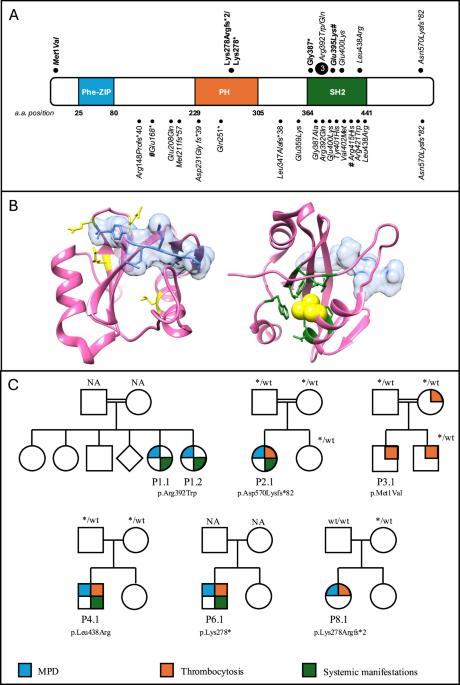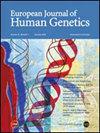双等位基因SH2B3种系变异与新生儿骨髓增生性疾病和多系统受累有关。
IF 4.6
2区 生物学
Q2 BIOCHEMISTRY & MOLECULAR BIOLOGY
引用次数: 0
摘要
已知的遗传疾病,如努南综合征和唐氏综合征,可出现在新生儿期或婴儿期早期,伴有骨髓增生性疾病(MPD)或骨髓生成异常,通常会自行消退。这种现象是由于围产期造血过程中遗传条件导致的分化和细胞调节不平衡所致。最近,SH2B3变异也与新生儿MPD有关。然而,关于SH2B3变异的临床意义,特别是血液学外表现谱的数据仍然有限。在这里,我们描述了10例儿童SH2B3相关疾病的临床特征,8例患者由生殖系双等位基因SH2B3功能丧失(LoF)突变引起,2例患者由造血细胞杂合性丧失的单等位基因生殖系LoF变异引起。患者在出生后的最初几周就表现出MPD,这种症状大多是自限性的。随着血细胞计数的正常化,血小板增多症在儿童时期发展起来。此外,他们还表现出多系统的临床特征,包括生长迟缓、可变神经损伤、自身免疫性疾病。这些数据有助于定义与新生儿MPD相关的种系双等位基因SH2B3 LoF变异的临床表型,对患者管理和随访具有重要意义。本文章由计算机程序翻译,如有差异,请以英文原文为准。

Biallelic SH2B3 germline variants are associated with a neonatal myeloproliferative disease and multisystemic involvement
Known genetic disorders, such as Noonan syndrome and Down syndrome, can present in the neonatal period or early infancy with myeloproliferative disease (MPD) or abnormal myelopoiesis, which often self-resolves. This phenomenon results from an imbalance in differentiation and cell regulation caused by the genetic condition during perinatal hematopoiesis. Recently, SH2B3 variants have also been associated with neonatal MPD. However, data on their clinical significance, particularly across the spectrum of extra-hematological manifestations, of SH2B3 variants remain limited. Here, we describe the clinical features of ten children with SH2B3-associated disease, arising from germline biallelic SH2B3 loss-of-function (LoF) mutations in eight patients and in two patients from monoallelic germline LoF variants with loss-of-heterozygosity in hematopoietic cells. Patients displayed a MPD in the first weeks of life, which was mostly self-limiting. Following the normalization of blood counts, thrombocytosis developed during childhood. Moreover, they presented with a multisystemic clinical features consisting in delayed growth, variable neurological impairment, autoimmune disorders. These data contribute to the definition of a clinical phenotype associated with germline biallelic SH2B3 LoF variants presenting with neonatal MPD, with important implications for patient management and follow-up.
求助全文
通过发布文献求助,成功后即可免费获取论文全文。
去求助
来源期刊

European Journal of Human Genetics
生物-生化与分子生物学
CiteScore
9.90
自引率
5.80%
发文量
216
审稿时长
2 months
期刊介绍:
The European Journal of Human Genetics is the official journal of the European Society of Human Genetics, publishing high-quality, original research papers, short reports and reviews in the rapidly expanding field of human genetics and genomics. It covers molecular, clinical and cytogenetics, interfacing between advanced biomedical research and the clinician, and bridging the great diversity of facilities, resources and viewpoints in the genetics community.
Key areas include:
-Monogenic and multifactorial disorders
-Development and malformation
-Hereditary cancer
-Medical Genomics
-Gene mapping and functional studies
-Genotype-phenotype correlations
-Genetic variation and genome diversity
-Statistical and computational genetics
-Bioinformatics
-Advances in diagnostics
-Therapy and prevention
-Animal models
-Genetic services
-Community genetics
 求助内容:
求助内容: 应助结果提醒方式:
应助结果提醒方式:


